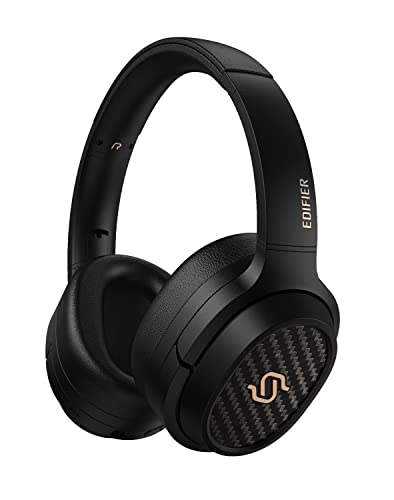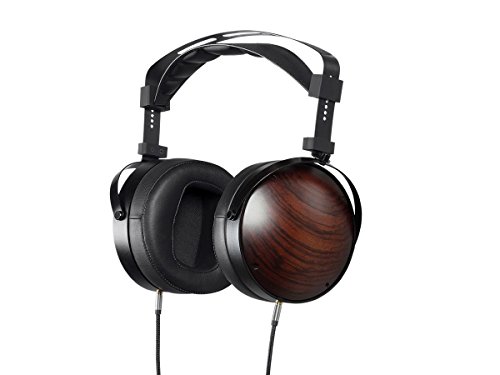 Planar Magnetic Headphones Explained
Planar Magnetic Headphones Explained
Planar headphones such as the Audeze LCD-4 or HiFIMAN Susvara have a very low level of distortion, lightning-fast transient response and a wide precise range of frequencies. However, these headphones require a specific headphone amplifier to drive them properly.
 They are heavier, bulkier and require more power to drive. This is why many people prefer closed-back designs, which isolate sound better and are more comfortable to wear for extended periods of time.
They are heavier, bulkier and require more power to drive. This is why many people prefer closed-back designs, which isolate sound better and are more comfortable to wear for extended periods of time.
What is a headphone that is planar magnetic?
A dynamic driver is used to produce sound in the majority of headphones, regardless of whether they are over-ear, on-ear or even in-ear. The drivers are domes or cones that are behind which a coil oscillates to produce sound waves. Planar magnetic headphones employ a different kind of driver that uses two magnets encased in an electrified film to deliver audio. These headphones are heavier and bulkier than conventional models, but they are well-crafted for long listening sessions.
Planar magnetic headphones are often quite expensive compared to their dynamic driver counterparts, as they require more sophisticated and complex technology to work. They are a fantastic choice for audiophiles that value accuracy and detail. They also offer an immersive, rich listening experience not found in other headphones.
Bass performance is one of the most impressive characteristics of headphones with planar magnetic design. The soundstage is large enough to accommodate the deep bass notes as well as the rumble and other features of these headphones. They are also great in handling articulation, tactile tones and mixing music.
Planar magnetic headphones, despite their impressive bass response, sometimes struggle to keep clarity and distinction in high and upper mid frequencies. They are also known to have an unbalanced sound because of their distinct ‘plucked-like’ sound.
If you’re interested in exploring the world of magnetic headphones that planar, I’d recommend an open-back pair like the Hifiman HE400i or the Monoprice Monolith M1070. You’ll also require a strong amplifier/DAC to allow these headphones to work effectively, so make sure to check out the Monolith Hi-Res DAC Headphone Amp if you’re looking for an excellent starting base.
What is a magnetic driver that is planar?
Planar magnetic drivers are the standard in audiophile headphones. The top models provide stunning clarity and power that can completely transform your listening experience and breathe new life into your music collection. However, these headphones aren’t suitable for everyone – they’re usually more expensive than other headphone models and typically require an amplifier to function properly. They are also larger, heavier and come with open-back designs that allow sound to be absorbed and let in ambient noise which makes them less portable than other choices.
Many people think that planar magnetic headphones don’t produce bass. However, they can. This is due to an elongated diaphragm that has an conductive trace pattern that is sandwiched between two arrays of magnets. When an electrical signal is sent from the audio source to your driver the magnetic field interacts with the trace patterns. This creates a vibration which creates sound waves.
Because the conductive traces are so thin and spread across the diaphragm, they can react more evenly to the magnets than dynamic drivers do. This enables a more precise and even transfer of audio signals with minimal distortion. This is why the headphones with planar magnetic technology typically have better accuracy and clarity especially in lower frequencies, where other types of headphones struggle to produce accurate sound.
Despite their superior performance in the low frequencies, most planar magnetic headphones aren’t great in the highs or bass. This is due to their design demands more intricate and expensive assembly that’s not possible to achieve cheaply or quickly. The most affordable over-ear magnetic headphones, therefore, tend to focus on higher frequencies and mids and less on bass. However, that doesn’t mean an affordable pair of planar headphones can’t give you a great music listening experience however it’s something to keep in mind prior to purchasing one.
What is a planar magnetic diaphragm?
In the market for audiophile headphones the planar magnetic headphones are extremely sought-after due to their ability to provide incredible levels of clarity and detail. This is due to their use of a different driver technology from the more standard dynamic drivers used in most headphones and speaker systems.
Planar magnetic headphones, such as the HIFIMAN Sundara for example, use an innovative new type of driver that utilizes flat diaphragms made of ultra-thin wires to produce sound waves. The diaphragms are then hung in the middle of two magnets that are flat. The magnets cause the diaphragms vibrate when an electrical signal passes through these wires.
This type of diaphragm is much more flexible and responsive than the stiffer dome-shaped diaphragms that are used in many dynamic headphones, which could be damaged by high forces of excitation which can cause distortion. Planar magnetic headphones are characterized by low distortion, fast transient response, and a broad range of frequencies.
Due to their larger size and more complex motor design they tend to be heavier and bulkier than their dynamic counterparts. They also require more power and an external amplifier to work optimally.
Planar magnetic headphones are also distinguished by their imaging, or the precise reproduction and stereo sound of instruments on a soundstage. This is a great advantage for those seeking the perfect headphones that will suit their audio preferences.
Unfortunately, this same broader wavefront can also mean that planar headphones are more likely to leak sound than other types of headphones. This could be a drawback when you’re out in public. This is a minor concern for the majority of listeners. The majority of open-back planar magnet headphones, such as the HIFIMAN Ananda, are designed to minimize sound leakage.
What is an example of a design for a planar headphone?
Many audiophile models employ magnetic drivers that are planar to provide amazing sound quality. This includes some of the most popular models on the market. These headphones tend to be slightly more expensive than those which use dynamic driver technology. This is due to the fact that they typically have more sophisticated drivers and may require a headphone amplifier to fully realize their potential. The positive side is that you don’t have to spend a fortune to enjoy the benefits of a pair of planar headphones. There are a variety of affordable options that include the Audeze LED-4 and HiFiMAN Susvara.
The key difference between these headphones and traditional dynamic driver technology is that the planar magnetic headphones make use of a flat diaphragm instead of a typical dome-shaped or cone-shaped one. The diaphragm has been coated with conductory material that has two permanent magnets on each side that are able to interact with the electrical signals from your hi-fi or music player system. This causes the diaphragm to vibrate in response to the audio signal.
Because the diaphragm is larger and moves across its entire surface, it is less susceptible to distortion than dynamic driver headphones when they reach the limit of its range of motion. This creates an even more detailed and expansive soundstage than is possible through dynamic headphones.
However, the Planar driver; qooh.me, is also more complicated and planar Driver difficult to manufacture than its dynamic counterpart which can result in some variation between headphones. It is important to read reviews from reliable sources, Planar driver and to listen to headphones with multiple people prior to purchasing.
They are also prone to leak sound. You’ll need to listen to them in a quiet place or put your ears in a padded case to block out the noise.
What is the price of a planar magnet headphone?
In the world of audiophile headphones Planar magnetic headphones are the top choice for many listeners due to of their superior clarity and detail. However they can be costly, especially compared to dynamic headphones. There are many alternatives for headphones with a planar design which are affordable.
The best budget planar magnet headphones have an open back design and are constructed of light materials that make them comfortable for prolonged wear. They also feature an impressive bass response and soundstage that is powerful. They are a good choice for people who like to listen to music while doing other tasks like commuting or working out.
There weren’t many options available for audiophiles looking to enjoy the benefits of planar headphones without spending a fortune. There are now a number of manufacturers who have developed a line affordable planar headphones that have outstanding audio quality.
For instance the Audeze LCD-2 Classics are a popular option for audiophiles who wish to experience the advantages of a headphone that is planar without breaking the bank. These headphones are renowned for their ability to have a life-like audio quality and outstanding clarity, thanks to their unique driver layout, which utilizes a thin, lightweight diaphragm that is suspended between two magnets.
The Monolith headphones from Moondrop Labs, and the HiFiMAN Sundara are also budget-friendly alternatives. Both headphones feature a deep and precise sound signature, and the build quality that is comparable to the more expensive models. They don’t have the same bass extension as other headphones in this list that are more expensive. It all comes down to what you’re looking for from the headphones. how do planar magnetic headphones work you prefer clarity and image quality, or do prefer a loud bass?
